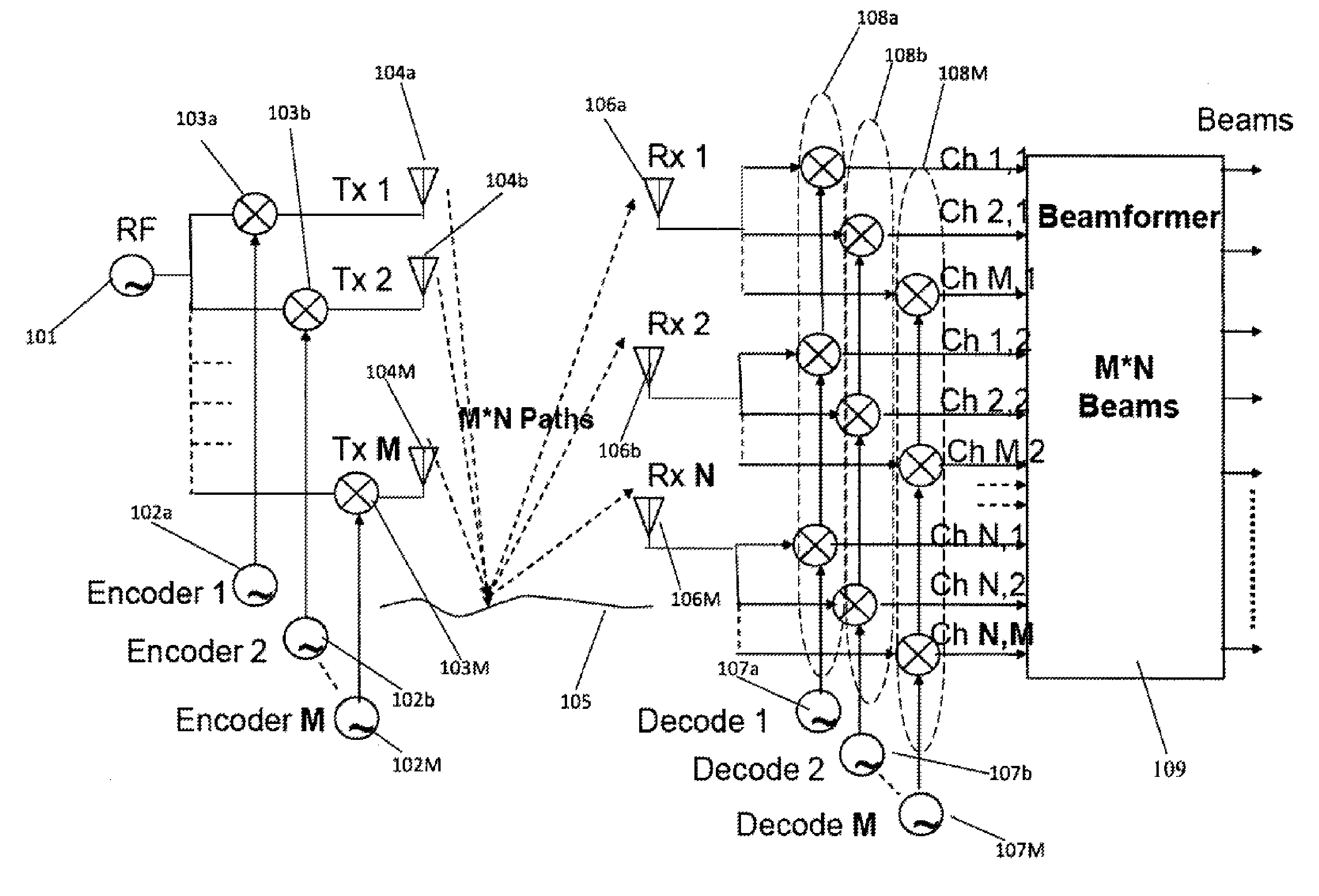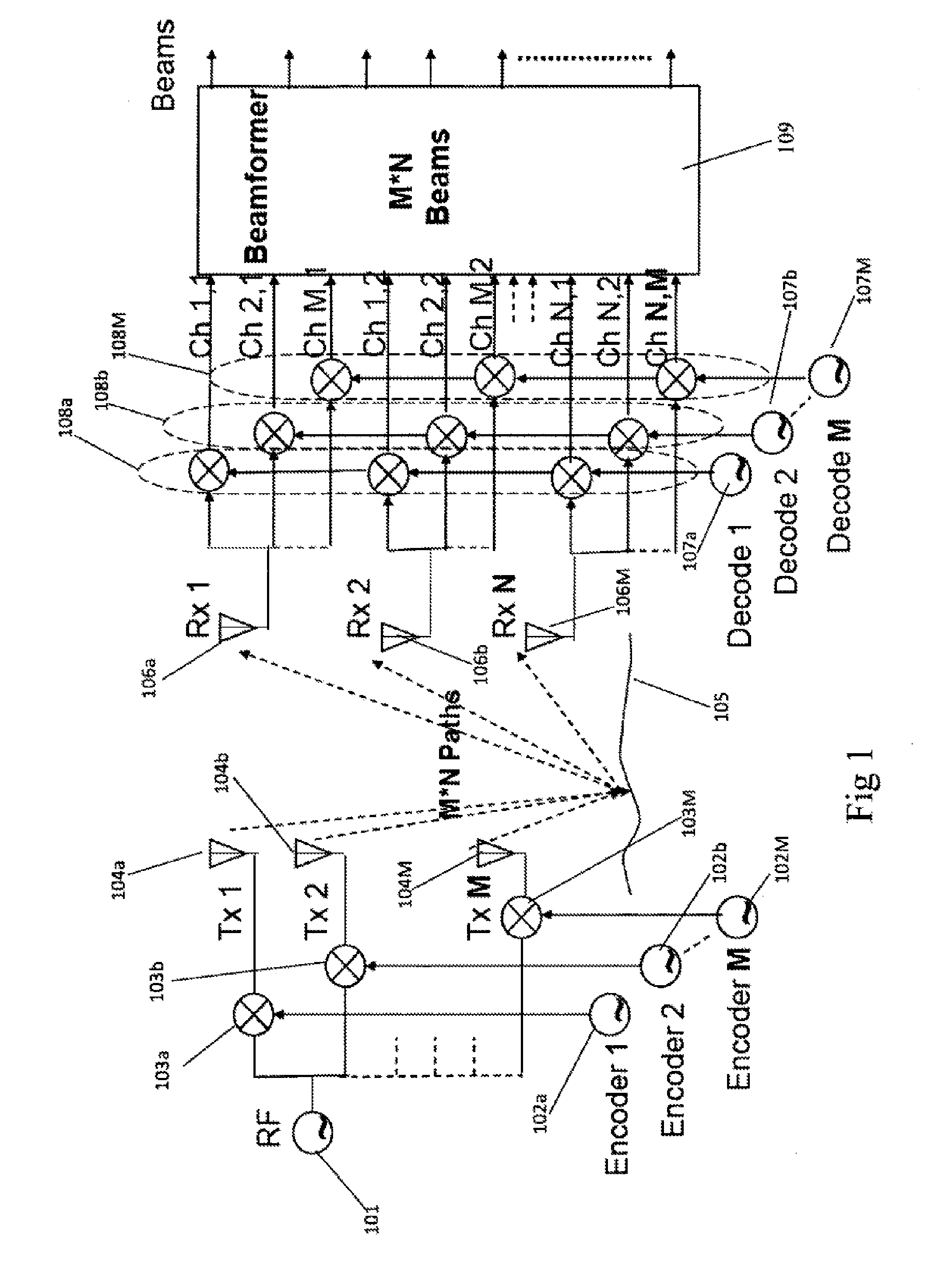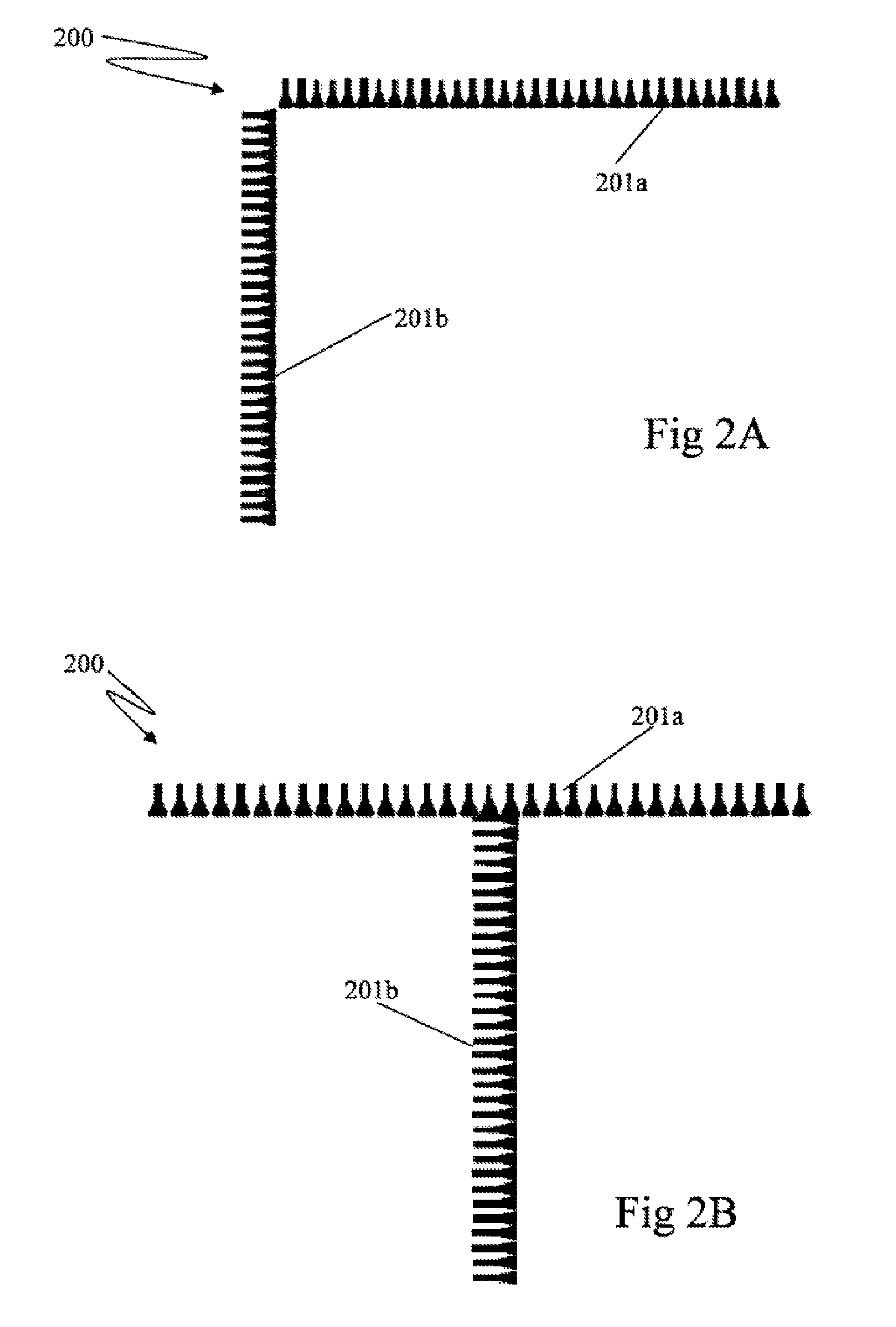Apparatus and method for assisting vertical takeoff vehicles
a technology of vertical takeoff and apparatus, applied in the field of radar altimeters, can solve the problems of many incidents and accidents involving the use of vertical takeoff vehicles, vehicle damage or at worst destruction, and vehicle down, and achieve the effect of improving range resolution
- Summary
- Abstract
- Description
- Claims
- Application Information
AI Technical Summary
Benefits of technology
Problems solved by technology
Method used
Image
Examples
Embodiment Construction
[0032]In order to produce a finely detail ground profile image via radar a multiplicity of beams is required. This conventionally requires a scanning dish antenna or phased array radar with many antenna elements and associated scanning electronics, making such systems complex and expensive.
[0033]An alternative approach to the formation of multiple beams is to utilise Multiple Input Multiple Output (MIMO) technique in association with orthogonal or near orthogonal transmitter and receiver antenna arrays. The MIMO technique makes use of the fact that the signal received from the far field with a bi-static transmitter receiver pair is identical to the signal which would be received by a single mono-static transmit / receive element placed at the mid point between the bi-static pair. For convenience, where the targets are in the far field, the image computation can be based on the geometry arising from a notional plurality of transient elements. The technique can also be used for signals ...
PUM
 Login to View More
Login to View More Abstract
Description
Claims
Application Information
 Login to View More
Login to View More - R&D
- Intellectual Property
- Life Sciences
- Materials
- Tech Scout
- Unparalleled Data Quality
- Higher Quality Content
- 60% Fewer Hallucinations
Browse by: Latest US Patents, China's latest patents, Technical Efficacy Thesaurus, Application Domain, Technology Topic, Popular Technical Reports.
© 2025 PatSnap. All rights reserved.Legal|Privacy policy|Modern Slavery Act Transparency Statement|Sitemap|About US| Contact US: help@patsnap.com



